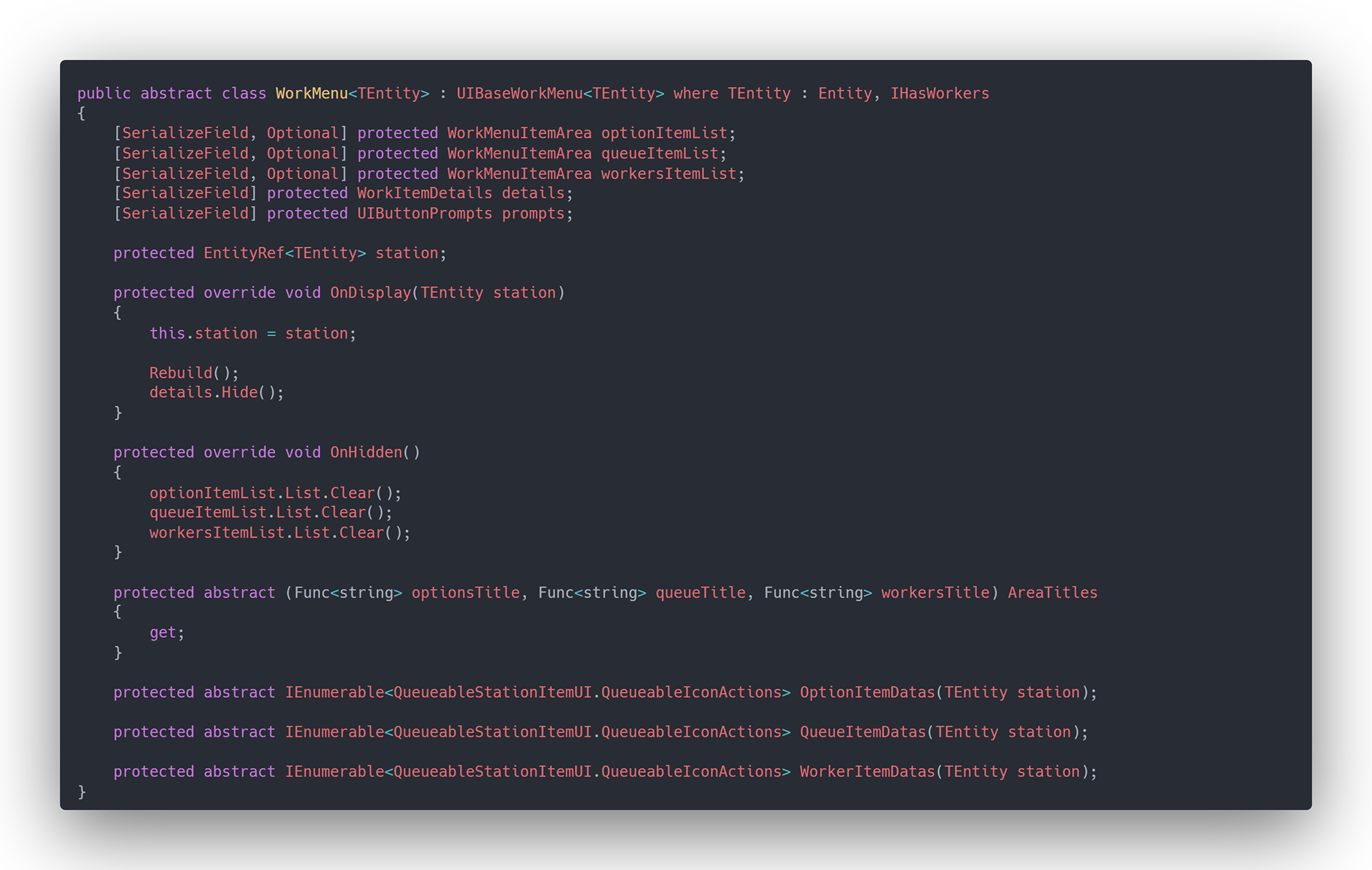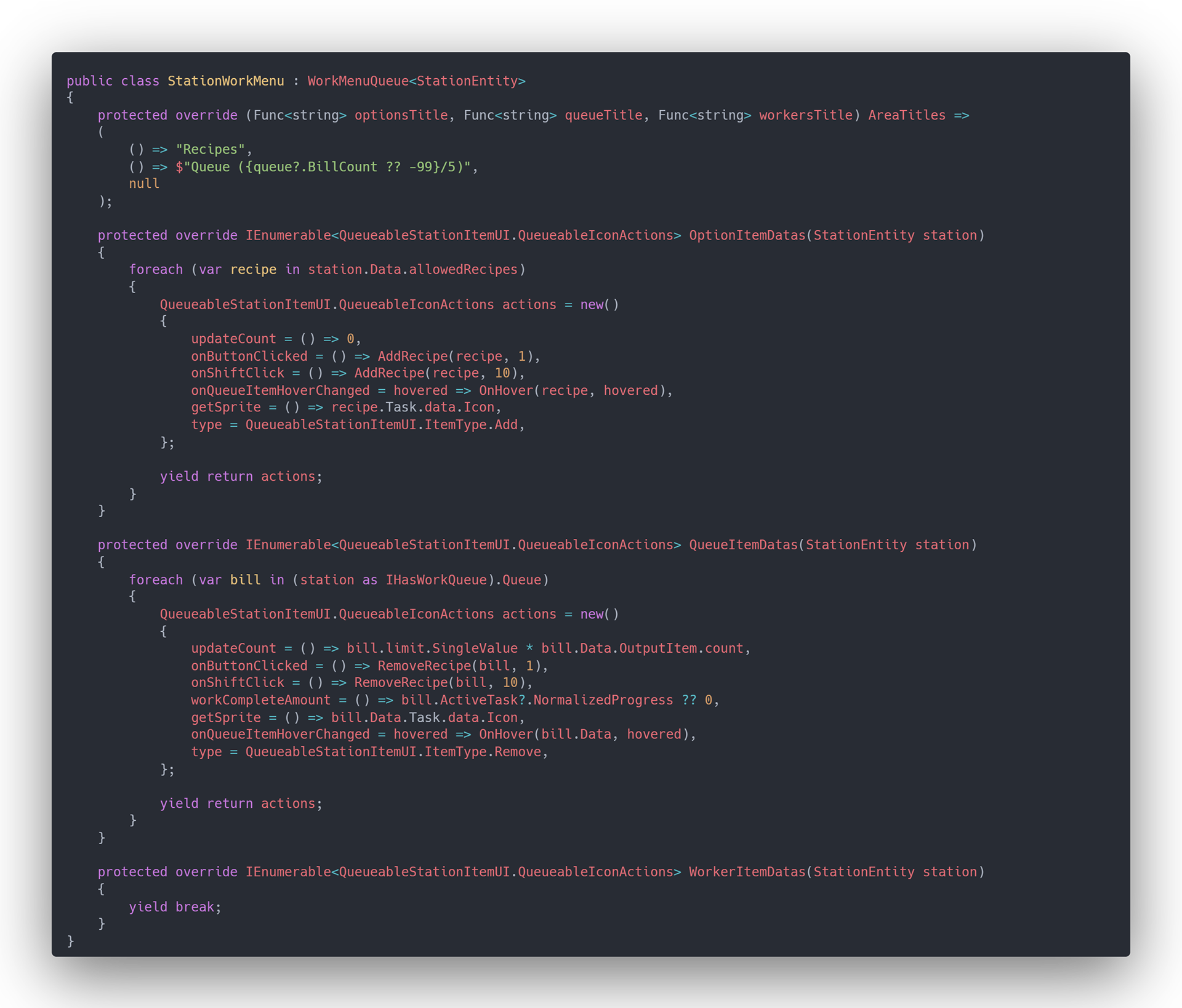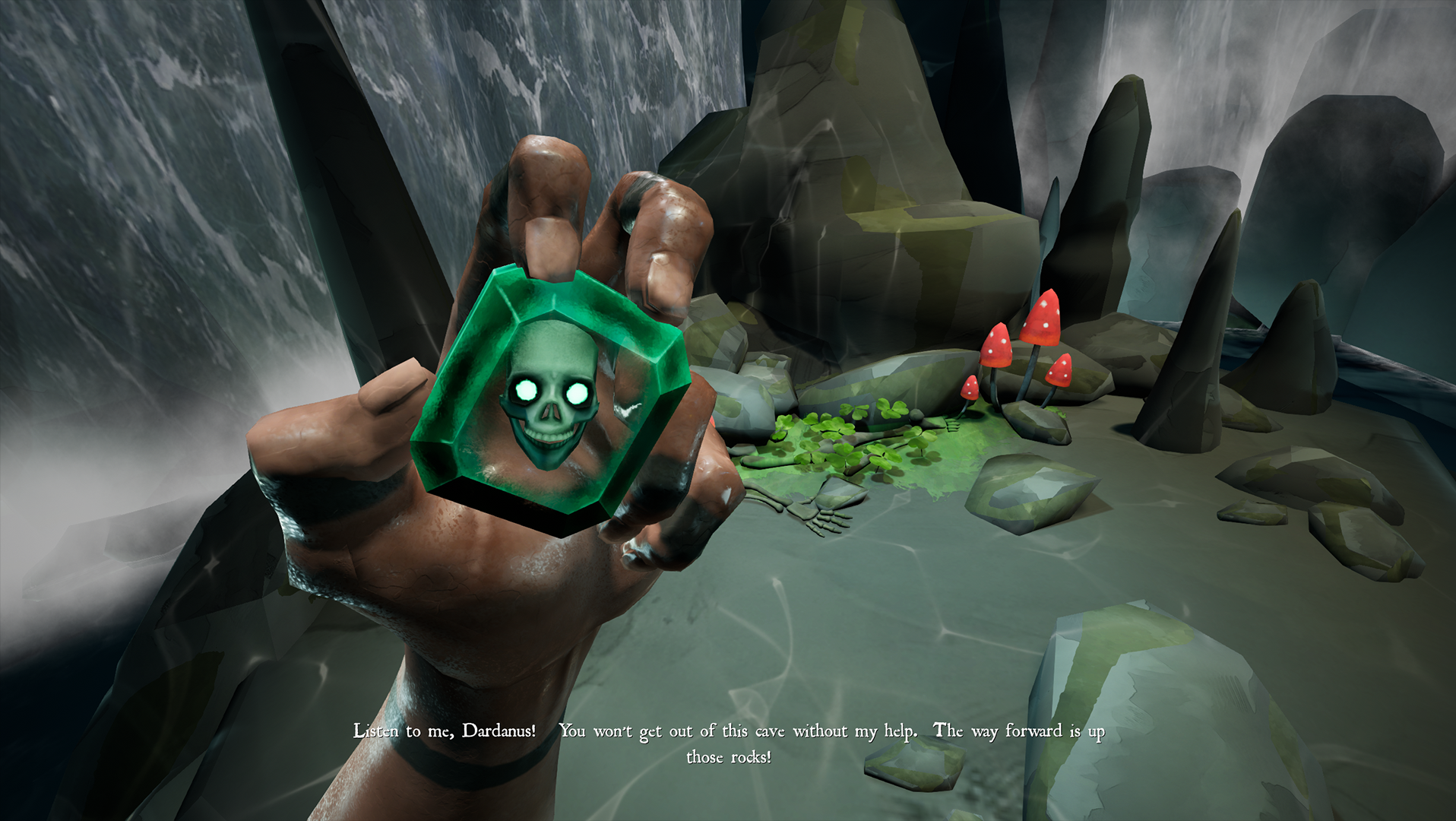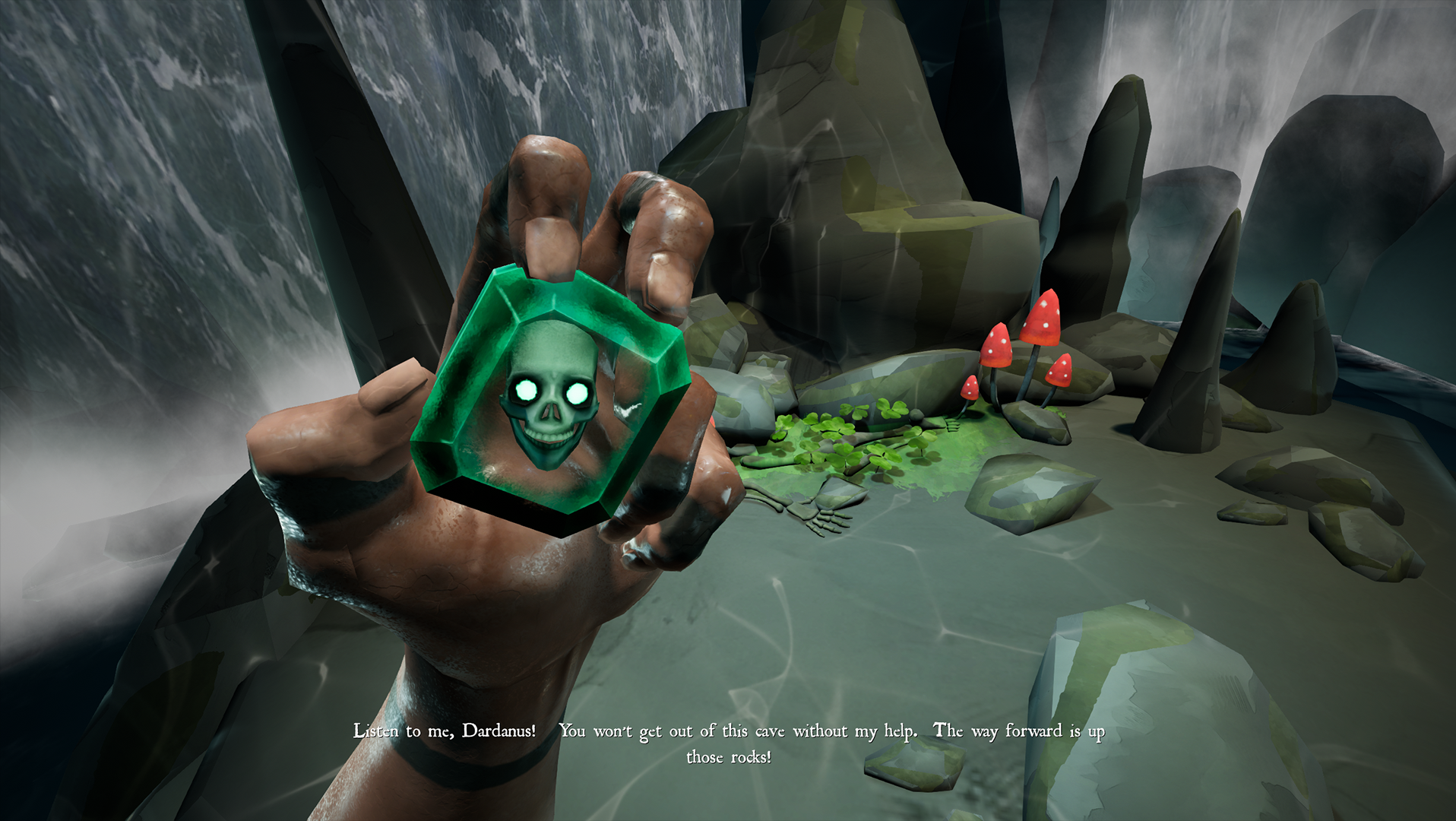The Colony 2044 - Project Lead & Technical Designer
Colony Sim / Survival Strategy | PC, Mac | Unity (C#)
In The Colony 2044, players guide a colony of bunny survivors through a post-apocalyptic wasteland overrun by zombified versions of their own kind. As both Project Lead and Technical Designer, I helped shape the foundation of the game’s core systems, designing and implementing everything from the colony's daily workflows to the modular UI systems used to manage it all.
Core Contributions
Systems Thinking with Scriptable Objects
One of our primary goals was to create an extensible, data-driven architecture that empowered my design choices and minimized redundant code. Working closely with our engineering team, we accomplished this by leaning heavily into Unity’s Scriptable Object architecture to define everything from crafting stations to colonist tasks.
Each station in the game, whether a weapons table, farm plot, or mineshaft, was defined via a scriptable object that described its function, the resources it consumed or produced, and any unique behaviors it triggered. Colonists could be assigned to these stations dynamically through an AI task system I worked with our engineering team to implement, which parsed station availability and resource conditions to determine optimal jobs in real time.
Tasks were modularly constructed, and my team designed the system to treat each task type (crafting, hauling, resting, defending) as a flexible behavior tree node, with the logic abstracted away so that new station types could be created without rewriting any base systems. This made iteration fast, and allowed us to scale up production and variety as the game evolved.
This architecture also enabled myself to author and balance gameplay content directly without needing to modify underlying code, an essential choice for a small, interdisciplinary team.
Building a Modular UI Framework
I was also responsible for designing and implementing most of the game’s menus, including colony management panels, colonist selection menus, station interfaces, and resource inventory displays. To support the game’s scale and complexity, I created a modular menu system that generated panels dynamically based on configuration data.
Rather than hardcoding every menu, I built a panel generator system that used configuration assets (Scriptable Objects again) to define what components each menu should contain from buttons, progress bars, and sliders, to nested data tables and task queues. This meant we could build new menu layouts simply by defining structure and behavior in a single asset.
The benefits of this were twofold:
1. Rapid iteration during playtesting and UX feedback sessions (menus could be adjusted without recompiling).
2. Systemic cohesion (all menus used shared components and data bindings, which made them reliable, consistent, and easy to debug).
It also enabled context-aware functionality: for instance, the colonist panel could display current task status, mood, health, and relationships in different ways depending on game state or player focus.

Modular Work Menu Base

Modular Work Menu Implemented for Station
Leadership & Vision
As the Project Lead, I maintained our vision for a game that was both strategic and emotionally resonant. The zombie bunnies weren’t just enemies, they were once part of some colony, and discovering the cure hidden in one of your survivors introduced a layer of narrative tension and mystery. This leaned into one of our core game pillars: Thematic Immersive Survival
My role included:
• Planning development milestones and scoping systems with the team
• Coordinating across art, design, and programming to ensure features landed smoothly
• Writing internal documentation and task specs to maintain clarity and reduce bottlenecks
• Conducting design reviews to ensure features aligned with player agency, clarity, and emotional tone
Design Philosophy
Every system I built in The Colony 2044 was designed with a few key pillars:
• Modularity: so we could build more, faster, with less overhead.
• Designer-accessibility: to reduce the dependence on engineers for content creation.
• Expressiveness: to support emergent gameplay, like letting a medic bunny abandon their post to grieve a lost friend, or a survivor hoarding food out of fear.
These choices helped us create a game that wasn’t just functional, but alive and full of unexpected interactions and player-driven stories.
Awards
Audience Choice Award - DreamHack Indie Playground 2025
I had the opportunity to showcase The Colony 2044 at DreamHack Dallas as part of the 2025 Indie Playground lineup. Out of dozens of indie titles, it received the Audience Choice Award, voted on by attendees for its unique blend of strategy, charm, and post-apocalyptic bunny drama.
This recognition meant so much to myself and our team. It was a blast getting to watch players enjoy our project after years of hard work.


